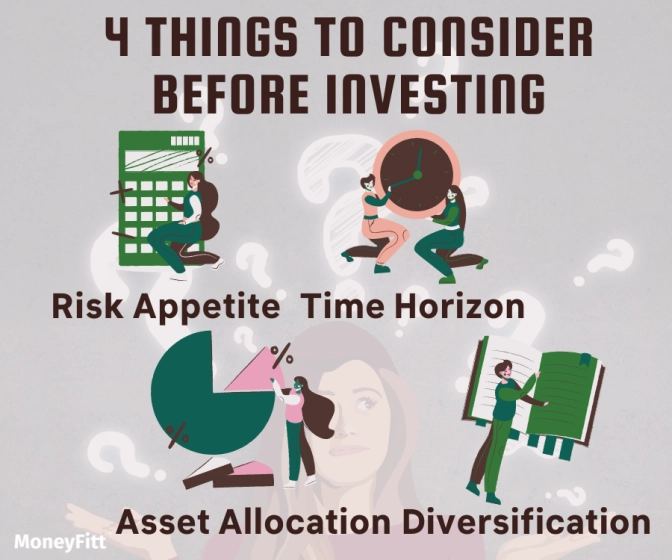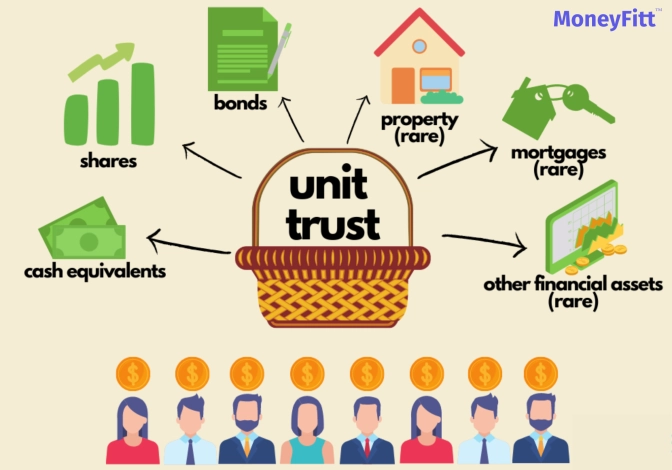Investing Introduction: The Ultimate Beginner’s Guide to Growing Your Money
It pays dividends to study the basic concepts and asset classes
- Investing is vitally important, so educate yourself as much as you can and do not get involved with investments you do not understand.
- Investments should suit the time frame of your goals and the level of risk that you are comfortable with. Remember that there is a trade-off: the lower the risk, the lower the likely long-term return.
- Diversification is a vitally important practice used to limit the risk of financial loss in order to protect and enhance your potential long-term returns. Diversification can take place by allocating investments across a spread of assets as well as within an asset class.
Investing is all about planning for the future. The investment landscape is complex and ever-changing, but the fundamentals can be easily understood. It pays dividends to study the basic concepts and asset classes, to best judge where the gains lie in the long run.

1) Risk Appetite
Risk appetite is your ability and readiness to lose some (or maybe even all) of your original investment for potentially greater returns. How much of a dip in the value of your investments are you prepared to see?
Aggressive investors are prepared to lose money in the short term for greater potential future returns, whereas conservative investors side with investments that have weaker future upside potential in return for the security of limited potential downside. If you are unsure as to what your investment risk appetite is, you could take one of the many free questionnaires available online to assess your risk tolerance.
2) Time Horizon
Investments should suit the time frame of your goals. Depending on the level of risk you choose with your investments, you can stack your chances of triumph in your favour by avoiding big financial blow-ups with a diversified portfolio. It's essential to control rather than avoid risk. Investing is a long-term game, so avoid letting short-term volatility disrupt your goals.
3) Asset Allocation
Asset allocation is about how much of each different asset type you have in your portfolio, such as shares, bonds and cash. How you allocate your investments between the various asset classes should reflect your current risk-reward profile and should be revisited regularly because:
a) The balance between asset classes will shift over time as different investments rise and fall, requiring rebalancing, and
b) Your own needs may change with age, changing life stage or specific circumstances (e.g. having a kid, losing a job, receiving an inheritance.)
4) Diversification
Diversification is used to minimise the risk of financial loss and therefore enhance your potential returns over the long term.
The most common (and practical) way to achieve diversification is to do the following:
- Actively choose to invest in multiple asset classes within a portfolio
- Actively look to have a higher number of investments within each asset class
At a high level, the thinking is that it is unlikely that all assets move in the same direction at once, meaning that short-term losses in one asset class may be offset by profits in another.
Diversification is also important within asset classes. Different segments of an economy perform differently under various economic circumstances, so a diversified investment portfolio helps to balance out your exposure to various economic and business cycles.
Common Financial Instruments

Cash
You know what you’re getting with cash returns. The interest you earn is easy to understand, plus you have almost zero risk of losing your capital. Although cash is the easiest to understand, it does not usually provide strong returns over the long term compared to most other asset classes. The interest earned on deposits in a savings account rarely tops inflation.
Shares
Shares represent part ownership of a company. They are originally issued to raise capital for funding the growth of a business, remaining solvent or acquiring additional assets. Purchasing shares makes you a shareholder of the company. As a shareholder, you can benefit from a company’s success through an increase in the share price or by receiving ongoing (and possibly increasing) dividend payments. Whether a company chooses to use their profits to pay out dividends or not is generally up to the management.
Factors that may impact a company’s share price (on a stock market):
- Economic conditions (e.g. inflationary outlook, currency moves)
- Sector and company-specific conditions (e.g. a change in growth prospects, expected mergers and acquisitions, the stability of dividends, disruptive or collapsing competition or raw material price changes)
Day Trading is Not Investing
Day trading is an extremely difficult profession, which claims far more victims than it makes winners. Do not consider day trading as investing.
Buying Shares Yourself
The most common way of purchasing shares is through a broker, for companies listed on local and international exchanges. Buying and selling shares in a company listed on a stock exchange is a fairly easy procedure.
Alternatively, shares are purchasable from a company seeking a listing through an initial public offering (IPO).
Bonds
A bond is a debt instrument. Issuing a bond is a form of borrowing, representing an investor's loan to a borrower (the issuer). Governments and companies can issue bonds to raise money for operations, purchases and other projects.
Bonds can provide income in two ways: interest income and capital gains. Interest income comes from the regular payment of ‘coupons’, whereas capital gains come if you can sell the bond for a higher price than originally purchased. The coupon is usually fixed, but the bond price may fluctuate. If the price of the bond goes up, the yield will go down, and vice versa. Why does it do that? It is because the coupon is fixed and the yield (the interest rate on the bond) gets calculated by dividing the coupon by the price of the bond.
Bonds are a way of diversifying and particularly appeal to those wishing to invest in an asset that will provide regular income over its life.
Unit Trusts (Mutual Funds) and ETFs

Unit Trust
Unit trusts, also known as mutual funds, is an open-ended vehicle that allows investors to pool their money together to purchase a number of securities, such as shares, bonds and other financial products. These funds are managed by portfolio managers, who select the investments and allocate and distribute the investors’ money subject to their official mandates. Unit trusts make it easy for investors to diversify without needing a huge sum of money or having to make complex decisions and deal with loads of paperwork.
Exchange Traded Fund (ETF)
ETFs are similar to mutual funds in that investors’ money is pooled and allocated into multiple securities, but unlike unit trusts, trade on stock exchanges, so you buy and sell them through a broker. This type of investment has become increasingly popular since its introduction in the mid-1990s due to low fees and high liquidity. The range and variety of ETFs are growing exponentially. The most popular ETFs are passive funds that seek to replicate the construction of an established stock market index, such as the S&P 500 in the US, the FTSE100 in the UK or even the MSCI AC Asia Pacific Ex-Japan Index. They don't employ expensive fund managers to research shares and try to time the trades, meaning costs charged to the fund (i.e. out of your investment!) can be much, much lower. The only direct fee paid is the brokerage commission for purchasing and selling ETFs on the market and through a broker.
The most popular ETF in the world (by assets under management) is the SDPR S&P 500 ETF Trust, which tracks 500 of the largest and most established companies on the United States Stock Exchange. Investors can choose from alternative ETF types, including Bond ETFs (e.g. Vanguard Total Bond Market ETF), Commodity ETFs (e.g. SPDR Gold Shares ETF), or Sector ETFs (e.g. Vanguard Energy ETF).
Real Estate Investment Trusts (REITs)
REITs are a highly popular, albeit not risk-free, method of investing. REITs pool investors money together to invest in a portfolio of real estate properties. REIT and property managers, who charge a fee for their services professionally manage them. REITs are almost always listed on stock exchanges such as the New York Stock Exchange, meaning that their prices, like shares, change in line with supply and demand. By investing in REITs, you’ll receive passive income (mostly rental income) at regular intervals.
Currency Investing

The foreign exchange (or Forex, FX) market is the global marketplace for exchanging currencies against each other, with over $6 trillion traded each day. Individual currencies do not have absolute values. Instead, currencies are traded against one another as exchange rate pairs, e.g. SGD to EUR.
Investors use forex markets to:
- Hedge against international currency and interest rate risk
- Theorise on geopolitical affairs (e.g. the selling off of Pound Sterling after the UK voted to leave the EU)
- Diversify portfolio
Even if you don’t "invest" in forex, changes in currency exchange rates can impact your portfolio – particularly if you invest in foreign shares/bonds. For example, you put S$2000 in French shares at the start of the year and during the year the prices don't move. However, the Euro gains 10% against the Singapore Dollar (SGD), so when converted back to SGD at the end of the year, the investment buys 10% more in SGD.
Crypto and Blockchain

Cryptocurrency, in particular Bitcoin, has grabbed a lot of media attention as the market value reached new heights. Here are some key things to note for those thinking about getting involved in this still very new market:
- Exchanges, such as Binance, Coinbase and Coinhako, are the most popular places to purchase cryptocurrency
- Bitcoin makes up a large part of the cryptocurrency market; ‘Altcoins’, such as Ethereum, make up the rest
- There is currently no legislative protection regarding cryptocurrency
- Cryptocurrencies are popular with high-risk, high-reward investors
INVESTING INTRODUCTION. COMPLETED. ✅
Sources:
- https://www.investopedia.com/articles/basics/11/3-s-simple-investing.asp
- https://www.ft.com/content/bb6f6bb3-37d9-4c86-a1db-83e24cf6b460
- https://sg.finance.yahoo.com/news/big-risk-appetite-understanding-personal-022324699.html
- https://www.forbes.com/sites/simonmoore/2020/06/18/day-trading-surges-in-popularity-this-wont-end-well/?sh=54bb8b4f56c8
- https://www.fidelity.com/viewpoints/retirement/how-much-do-i-need-to-retire
- https://www.investopedia.com/terms/f/financial-independence-retire-early-fire.asp
- https://www.moneysense.gov.sg/articles/2018/10/understanding-real-estate-investment-trusts-reits?sc_lang=en
- https://www.sc.com/sg/wealth/insights/reits-101/
